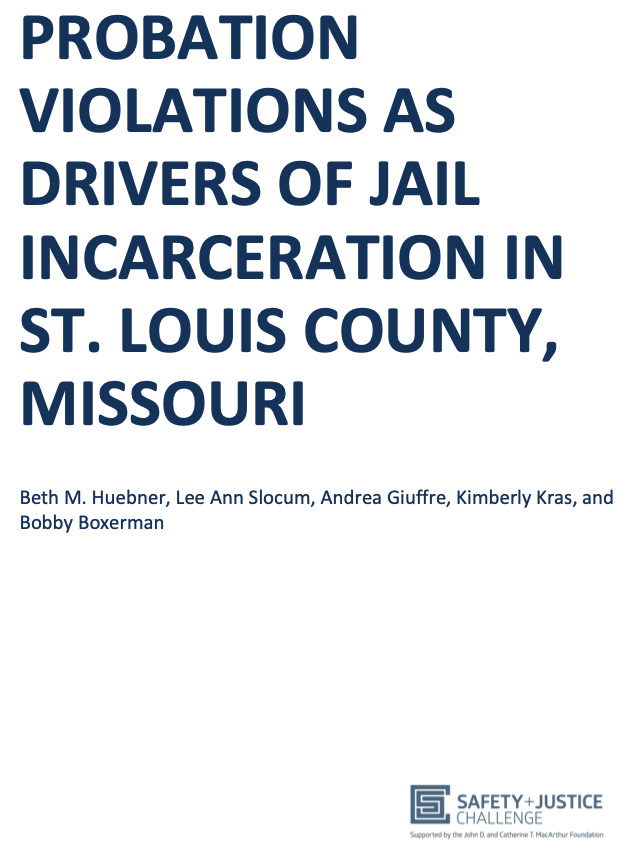The last several years have ushered in a seismic shift to Los Angeles County’s criminal justice landscape. Home to the world’s largest jail system, LA County achieved an unprecedented 25 percent decline in its jail population–the largest in the nation during the height of the COVID-19 pandemic. While the overall number of people in jail decreased, the percentage of people of color and people with mental health needs behind bars in LA increased. This changing composition mirrored a national trend and illustrated a key lesson: without a parallel effort to promote racial equity and provide safe, community-based care for people who need it, reducing jail populations may actually worsen disparities.
To address this, LA County—a grantee in the John D. and Catherine T. MacArthur Foundation’s Safety and Justice Challenge—announced a new vision of “Care First, Jails Last” and deepened its investment in community-based support for vulnerable populations and alternatives to incarceration. LA County also launched the Justice, Care, and Opportunities Department to consolidate most of these efforts under one roof.
As members of the Center for Justice Innovation (The Center) team, we are technical assistance partners in the Safety and Justice Challenge and worked with LA County to expand their alternatives to incarceration with particular emphasis on equity. Inspired by the learnings from this work—and grounded in our long history of launching and operating diversion programs—our West Coast Initiatives team authored a new report. The report offers concrete insights to inform the development of equitable diversion programming around the country. For practitioners seeking to create diversion programs, this document offers advice on designing early alternatives to incarceration, leveraging data to identify and connect with target populations, and working towards racially equitable outcomes.
We collaborated with LA County to launch two initiatives—the Rapid Diversion Program, which is court-based, and the Prefiling Diversion Program, which is based in law enforcement stations. Both programs aim to reduce the use of jail by connecting participants to safe, appropriate, and community-based care.
While successful diversion programs can safely reduce the use of incarceration, special care must be taken to ensure that these programs are carried out in an equitable way. We hope the insights of the report can provide guidance for developing diversion initiatives that bridge the gap between legal systems and communities while caring for vulnerable populations.
The first section of the report offers tips for developing the essential components of an early diversion program. Recommendations include:
- Create infrastructure to divert people at the early stages of a case.
- When determining eligibility criteria, prioritize the client profile over charges. When creating diversion programs, justice partners typically determine charge types to include and exclude in programs. Instead, we suggest program partners determine the profile of people they want to serve—for example, mental health, people with three or more arrests/system contacts, young people, race and ethnic groups that are disproportionately represented, etc.—and let that guide program development.
- Make charge-based exclusions (sex offenses) presumptively instead of categorically ineligible. This means that instead of having categorical exclusions based on what people may be charged with, presume people are eligible for programs and, when someone is facing a presumptively ineligible charge, allow for discussion on a case-by-case basis.
- Even within the same municipality, recognize that each diversion site may operate differently and have a distinct culture.
- Seek out cross-sector collaborations and expertise in the program planning phase.
The opportunity to provide community-based care to people with unmet social service needs can happen at stages that far precede a criminal conviction—any time before a criminal case is adjudicated, and indeed, even before criminal charges are filed. For example, LA’s Prefiling and Rapid Diversion Programs utilize police stations and courts as potential off-ramps from the traditional legal system path.
Both programs pursue a common objective: to expand early interventions for people with unmet needs rather than continued detention or release without any supportive resources. To accomplish this, LA located behavioral health care professionals in the jails and courthouse. For Prefiling Diversion, this meant physically converting unused breathalyzer rooms and offices into spaces for care by placing service navigators in the station. Service navigators find programs and help people enroll in them and understand how to get connected to the program (i.e. when and where to go for intake, whom to call for questions). The Rapid Diversion Program embedded pairs of service navigators and clinicians in courthouses.
Four roles can improve the diversion infrastructure:
- Mental Health Clinician—screens candidates for behavioral health conditions and appropriate level of services for the behavioral health program someone will need.
- Service Navigator—identifies healthcare and social service needs, finds local programs and providers, and connects participants to these organizations and services.
- Case Manager—supports participants one-on-one. Often the main point of contact for program participants, case managers provide referrals for continuing needs, such as education, employment resources, benefits, and housing, and help participants stay engaged in the program.
- Driver—takes participants to their agreed upon destinations, oftentimes directly from the police station or courthouse to appointments, referred services, and future court dates. This is especially important for jurisdictions where transportation equity is a challenge. Although the driver’s primary role is to transport program participants, the driver frequently interacts with program participants and serves as an additional level of support.
Building these roles into any diversion program—and locating these professionals at the booking station or courthouse where possible—can help ensure that people with specialized knowledge connect participants to resources in a coordinated way. Interactions with program staff are also supportive touchpoints, which is made possible by hiring staff who understand the needs of participants and want to help. This includes people with lived experiences (including families impacted by the criminal justice system), previous program graduates, and people with clinical backgrounds. Remaining intentional about including and staffing each role, especially case managers and drivers who interact with participants frequently—can make even the mandatory components of diversion programs motivational.
The second section of the report includes recommendations for using data to promote equitable practices for diversion. The report stresses the need for prioritizing data collection as a critical tool in ensuring equity. Data analysis can help to identify underlying needs and shape the design process prior to program launch. After launch, a consistent flow of data among partners is necessary to sustain the program and gives planners the ability to adjust the program as needed.
Recommendations include:
- Use relevant and detailed data at the planning stage to ensure equity and effectiveness of programming.
- Review program performance data on an ongoing basis to ensure the right people are being served.
- Make data planning a team effort.
- Clarify roles and responsibilities around data management.
When launching a program meant to achieve equity, program planners should learn how to meet the needs of the desired population. Instead of looking at the types of charges to divert, examine who is being charged and any trends that can inform the demographic to serve (e.g. people who are unhoused but arrested for quality of life offenses, or people arrested on a drug offense but who are excluded based on prior drug convictions). Having a better understanding of common issues—not just charges—that people face can radically shape programming.
In addition to using data on the front end of design, the report recommends reviewing program performance data on an ongoing basis to ensure program efficacy and equity. Recurring reviews should include program staff who can speak to participants’ growth in the programs, especially to help the program collaborators understand ways to improve and sustain the program so it continues to have its intended impact.
Many partners in Los Angeles County make the Prefiling and Rapid Diversion Programs possible, including the LA County’s Justice Care, and Opportunities Department,the Offices of the Los Angeles County Public Defender and Alternate Defender, the Los Angeles City Attorney’s Office, and Los Angeles County District Attorney’s Office, the Department of Mental Health, Project 180, and Exodus Recovery, Inc.






